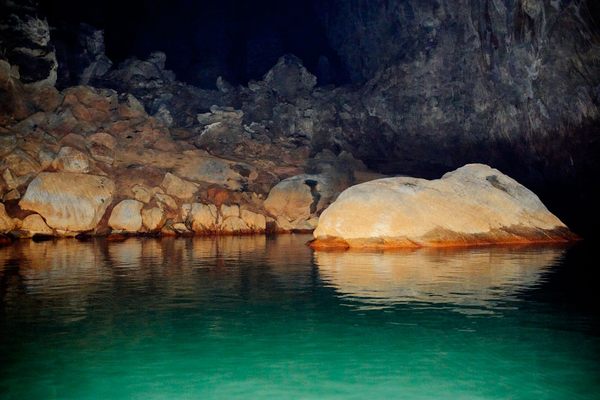Lala Khal
A beautiful stretch of Bangladeshi river known for its high quality sand is possibly more remarkable for its color changing water.
In the northeast corner of Bangladesh, at the border with India, the Himalayas stop. The Himalayas (Sanskrit for “abode of the snow”) dissolve into gentle slopes blanketed in shrubs of tea, and the snow, melted, flows into Bangladesh in the Shari-Goyain River. Just on the Bangladesh side, on the banks of the blue river, is an area called Lala Khal.
Lala Khal is about 26 miles from Sylhet, the micropolitan capital of Sylhet Division, Bangladesh’s tea production epicenter. The locals have only recently started calling Sylhet a city; before, it was just a town. From there, the best way to get to Lala Khal is on a public bus. For 60 taka each (78 US cents), a bus destined for Jaflong drops off passengers all along the way, including at Sarighat, the gateway to Lala Khal. On the way, locals point out the growing hills: “India.”
At Sarighat, between the highway and the river, stalls sell everything: biscuits, toothpaste, potato chips, and cigarettes. Lighters dangle from strings tied to the ceilings. In the early summer, pyramids of watermelons line the road, and red, juicy slices sit perched atop the piles, beckoning flies and buyers. Below, on the river, men sit smoking among summer fruits piled high in small boats.
A few steps away from the bus stop, a concrete staircase descends to the riverbank, where a row of colorful boats, called “nokas” in Bengali, wait for visitors. The boat operators, called “nokawallahs,” flock to tourists and demand prices three times what might be considered fair. For a foreigner, an hour ride on a private boat, all the way to the border, should cost between 800 and 1000 taka (around 10 USD).
The nokawallah starts the engine with oil from a water bottle, and the boat cruises past hearts carved into rocks and women doing laundry. Swimming boys splash and wave. After a while, the boat stops at the Lala Khal Tea Estate, where tea grows in winding rows and the laborers and their families live in a self-contained village. On the slope rising from the river, a sign warns against crossing into India. Several feet beyond, the India Border Guard keeps watch.
Later in the year, at the height of monsoon season, the river will rise several feet. The riverbanks will become unrecognizable, and the water will turn murky and brown. But in the brutally hot early summer, the water is still cool and crystal blue. Floating there in the South Asian summer, it’s possible to forget fear and worry: on the way back to Sarighat, sitting on top of a noka canopy, the most beautiful setting sun in Bangladesh will dry your wet clothes.
















Follow us on Twitter to get the latest on the world's hidden wonders.
Like us on Facebook to get the latest on the world's hidden wonders.
Follow us on Twitter Like us on Facebook